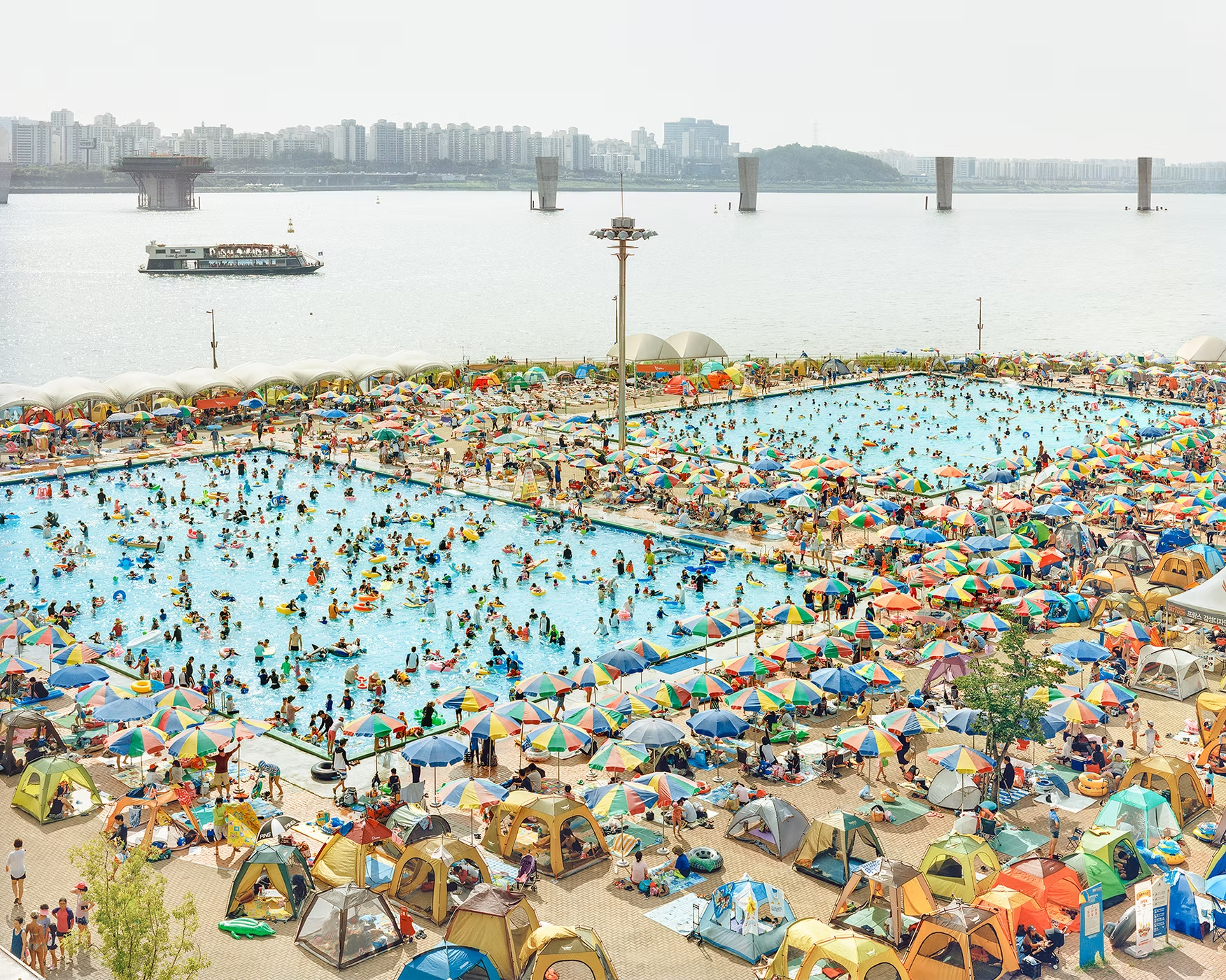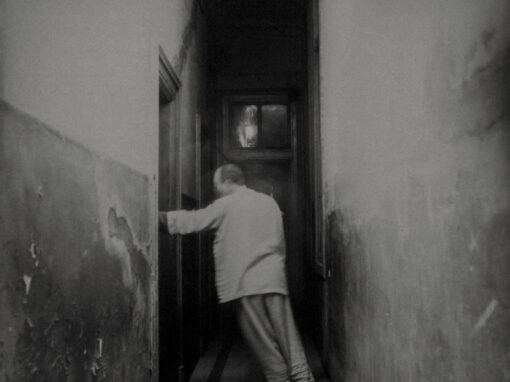Seunggu Kim’s photographs offer a view of society that is at once distant and deeply human—scenes observed from above, yet rooted in the shared fabric of daily life. Working with a 4×5 camera and a slow, deliberate process, Kim composes images that reveal how people move, gather, adapt, and coexist.
His celebrated project Better Days is not just a document of public spaces in Korea; it is a reflection on trust, civic participation, and the lingering cultural memory that binds individuals into communities. In this conversation, we talk about the ideas behind the work, the rigorous method that shapes it, and the belief that photography can both describe the world and reimagine it.
Tomasz Trzebiatowski: Seunggu, it’s great to have you here. I recently discovered Better Days at a bookstore in Switzerland and was immediately struck by the concept and the pictures. Before we get into the book, tell me: what draws you to photography? What are you looking for when you work?
Seunggu Kim: For me, the power of photography isn’t only in recording reality, but in shaping new narratives through the photographer’s point of view. Fragmented moments can join to form a story and invite viewers to imagine another layer of reality. Photography also offers the pleasure of modernist form while taking a post-modern, critical look at social phenomena. Beauty and critique, documentation and interpretation—these can coexist. That’s why I see photography as a narrative art that reflects both the individual and the times we live in.
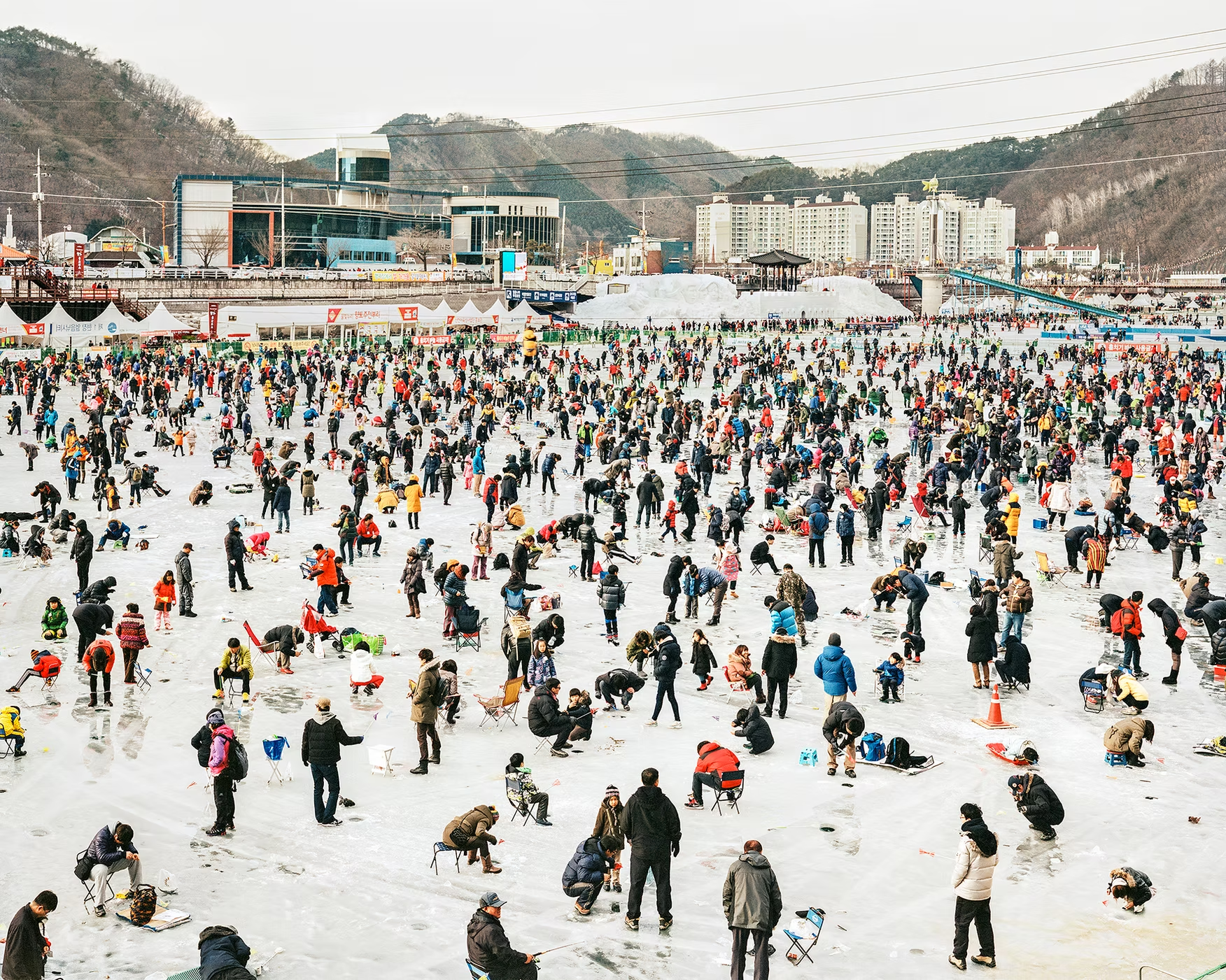
Let’s talk about Better Days. What did you want to explore about Korean society, and how did you translate those ideas into pictures?
I wanted to express the community-based trust that runs through Korean society. Of course, versions of this exist everywhere, but in Korea it feels especially strong. Its roots go back to our agrarian tradition—mutual-aid practices like dure and pumasi—and to Confucian values that emphasize loyalty and filial piety.
In the modern era—Japanese occupation, the Korean War, resistance to dictatorship, rapid economic growth, democratization—citizens’ participation and sacrifice were decisive. Those experiences cultivated a sense of civic agency: resisting injustice, doing one’s best in one’s role, thinking and acting quickly. I believe that same combination of community consciousness and civic engagement helped Korea respond to COVID-19 and to more recent political challenges.
So, for me, building a healthy society depends less on isolated individuals and more on a shared fabric of trust. Better Days describes that fabric.
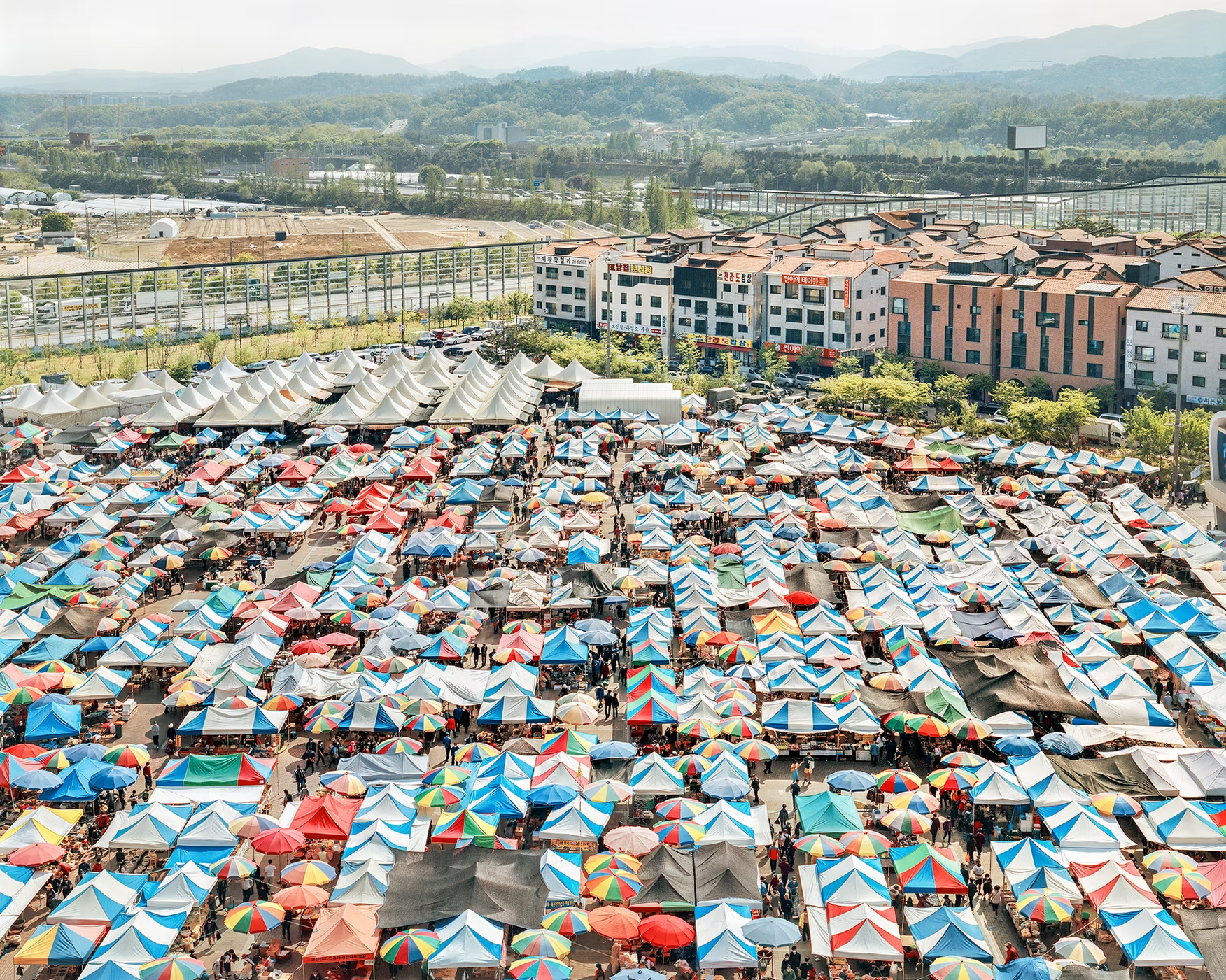
Visually, the series has a very distinctive look—often from elevated vantage points, with large groups organized into patterns. How challenging was it to make these pictures?
Quite challenging. Weather, access, permissions, money—everything matters. I often work from rooftops, hills, bridges—far enough away to respect people’s sensitivity to being photographed, but high enough to reveal the larger pattern. Sometimes I joke that one day I’ll save enough to buy a sky car.
What camera did you use?
A Linhof Master Technika 4×5 with 4×5-inch sheet film (ISO 400).
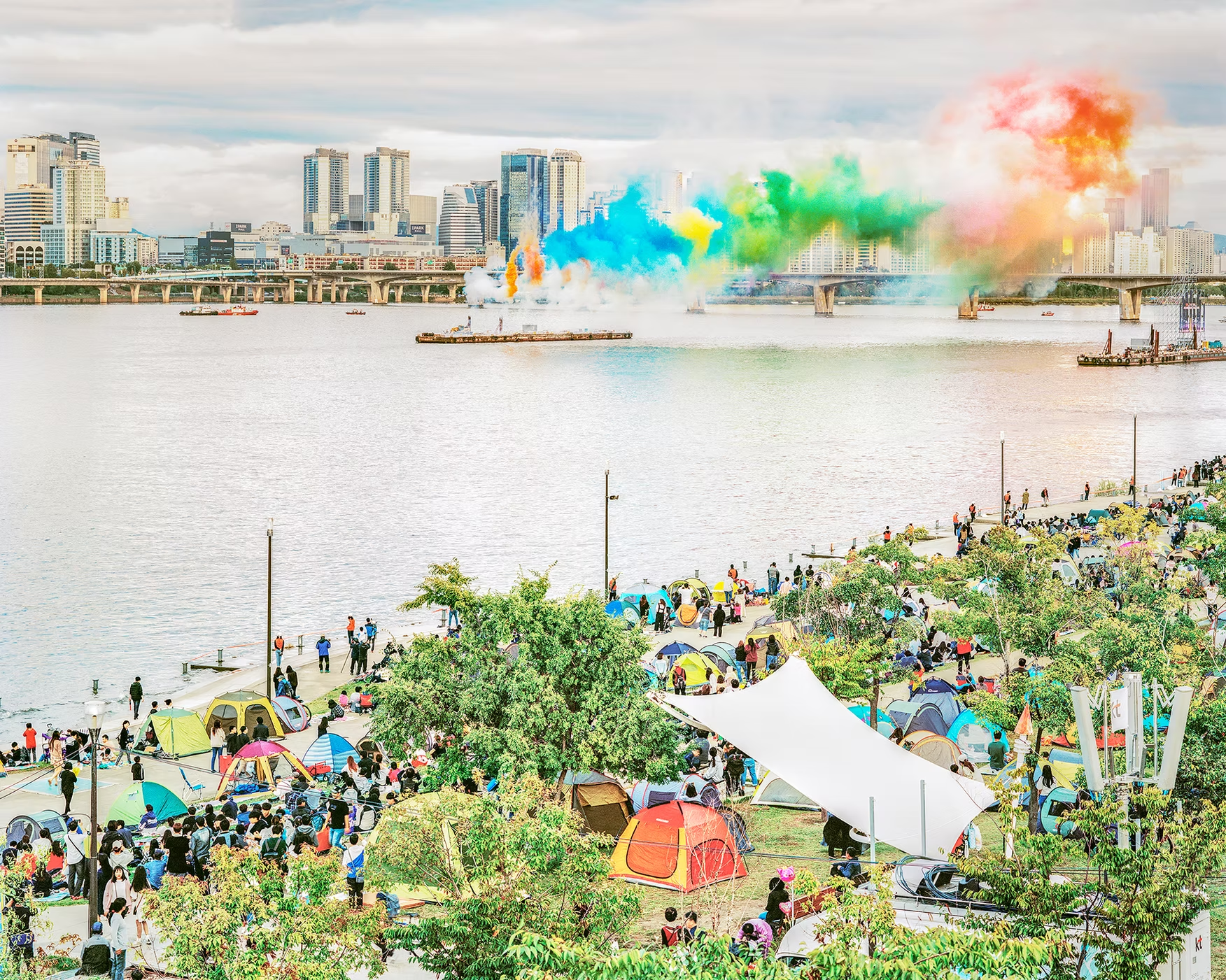
Why insist on analog and large format?
First, the process shapes the photographer’s attitude. My cycle—shooting, developing, scanning, editing—permeates daily life. At home I review photographs; outside I’m constantly thinking about the meaning in front of me. Work and daily life become inseparable.
Second, digital’s ability to review instantly has leveled expression and made it easy for anyone to be a “photographer.” Analog denies that immediacy. You can’t see the result when you press the shutter; you must deliberate and rely on intuition. That separation from instant feedback strengthens confidence and helps form a personal style.
Finally, analog is emotional: anticipation, anxiety, joy, frustration. Loading film holders makes me envision the scene. Carrying a big camera forces me to consider the weather and the day. If conditions are wrong, I might have to return next year. The unpredictability of the final print intensifies the feelings when I finally see the negatives. In that sense, every photograph is not just a capture of a scene but the result of both physical circumstances and psychological process.
All that said, I love photography in every form—non-silver processes, film, digital. But I think photographers have a special privilege: to reconstruct the world through fragments and pass on their meaning, helping others see differently or ask new questions.
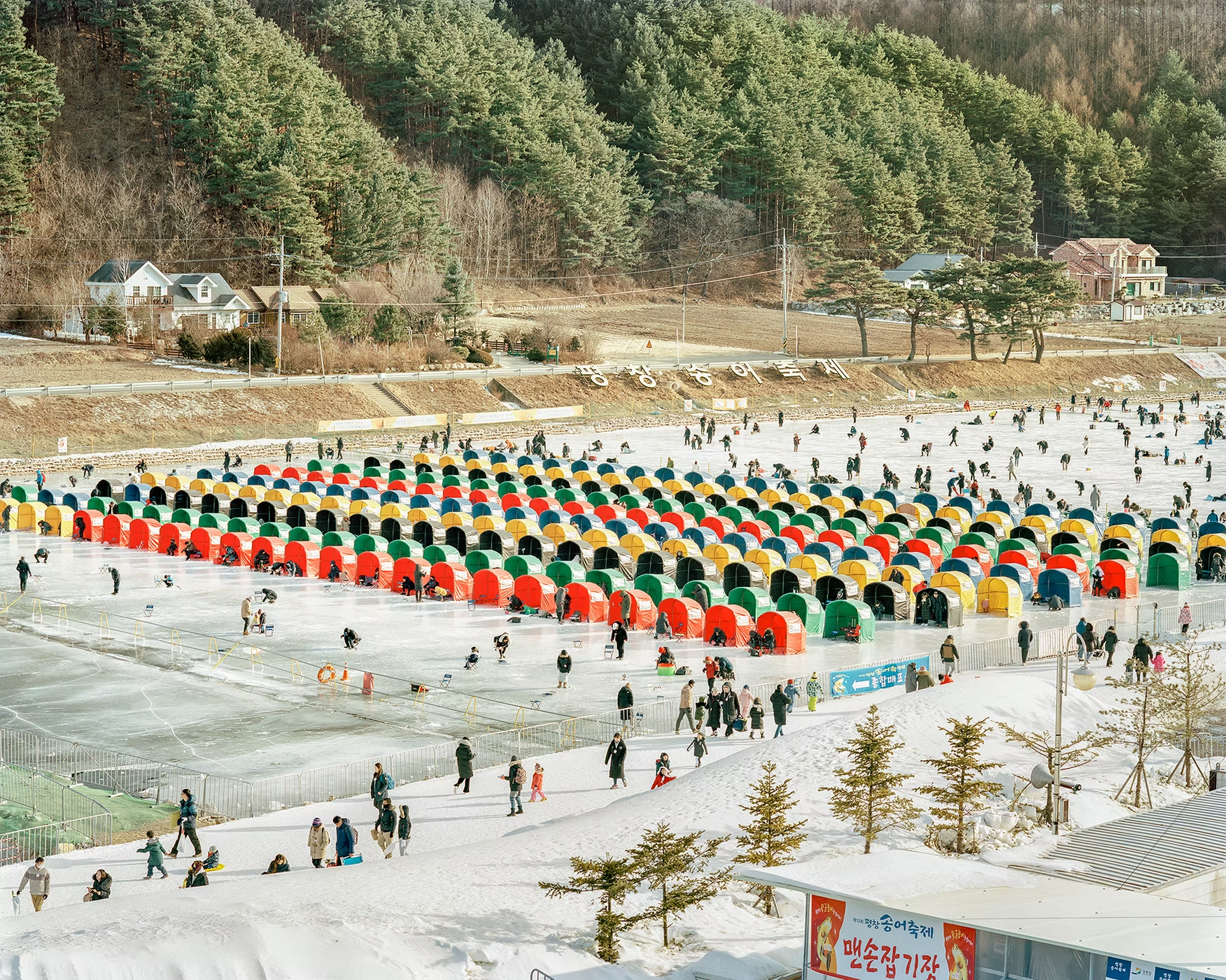
Respect for the dedication—big camera, long climbs, multiple returns. How many pictures made it into the book?
Forty-nine.
And how much did you shoot to arrive there?
I’ve been working on the series for about fourteen years. I can’t count the sheets anymore. For the book, I first narrowed to roughly a hundred pictures, then edited again to the final forty-nine. In total I have a few hundred frames—some stronger than others, of course.
Let’s start with the cover image—the public pool surrounded by hanok houses near Seoul. Was it difficult to make?

Yes. People can be sensitive about cameras, so I kept a respectful distance and searched for height. I visited the place three times. In 2014, when I first went, there were only two people cleaning the pool—no picture. I returned, and finally in 2017 I got the frame I’d been imagining.
Another frame in the book shows a father and daughter with a crowd beyond a fence. You mentioned waiting a long time.
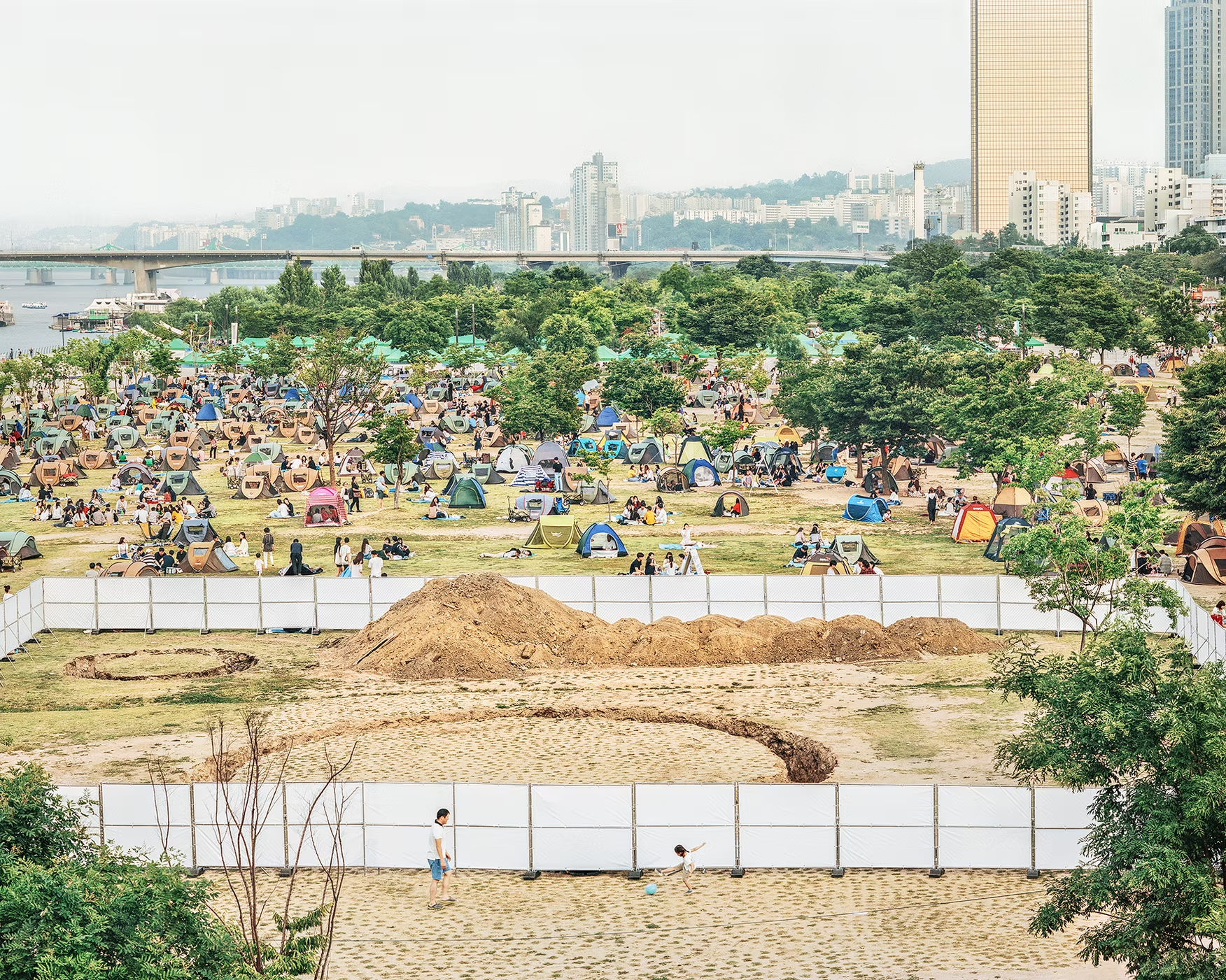
More than three hours. With 4×5, you compose on the ground glass before inserting the film holder. Once the holder is in, you can’t see through the camera, so you rely on memory of the frame and your timing. I set the composition, then waited and waited for someone to come into that exact foreground space. Eventually the father and daughter appeared and started kicking a ball—exactly what I hoped for.
Some scenes feel eerily orderly—almost like miniature figures arranged on a stage. At one point you mentioned COVID behavior, but the series predates the pandemic?
Many of the pictures are earlier—like the 2017 pool. But later, during COVID, I noticed similar patterns in how people adapted to public space—especially along the Han River where distance is possible. That resonance is there, even if the photographs themselves started before the pandemic.
One of your earlier projects is “Bamseom (Bam Island)” – the twin islets in the middle of the Han River. What drew you there?
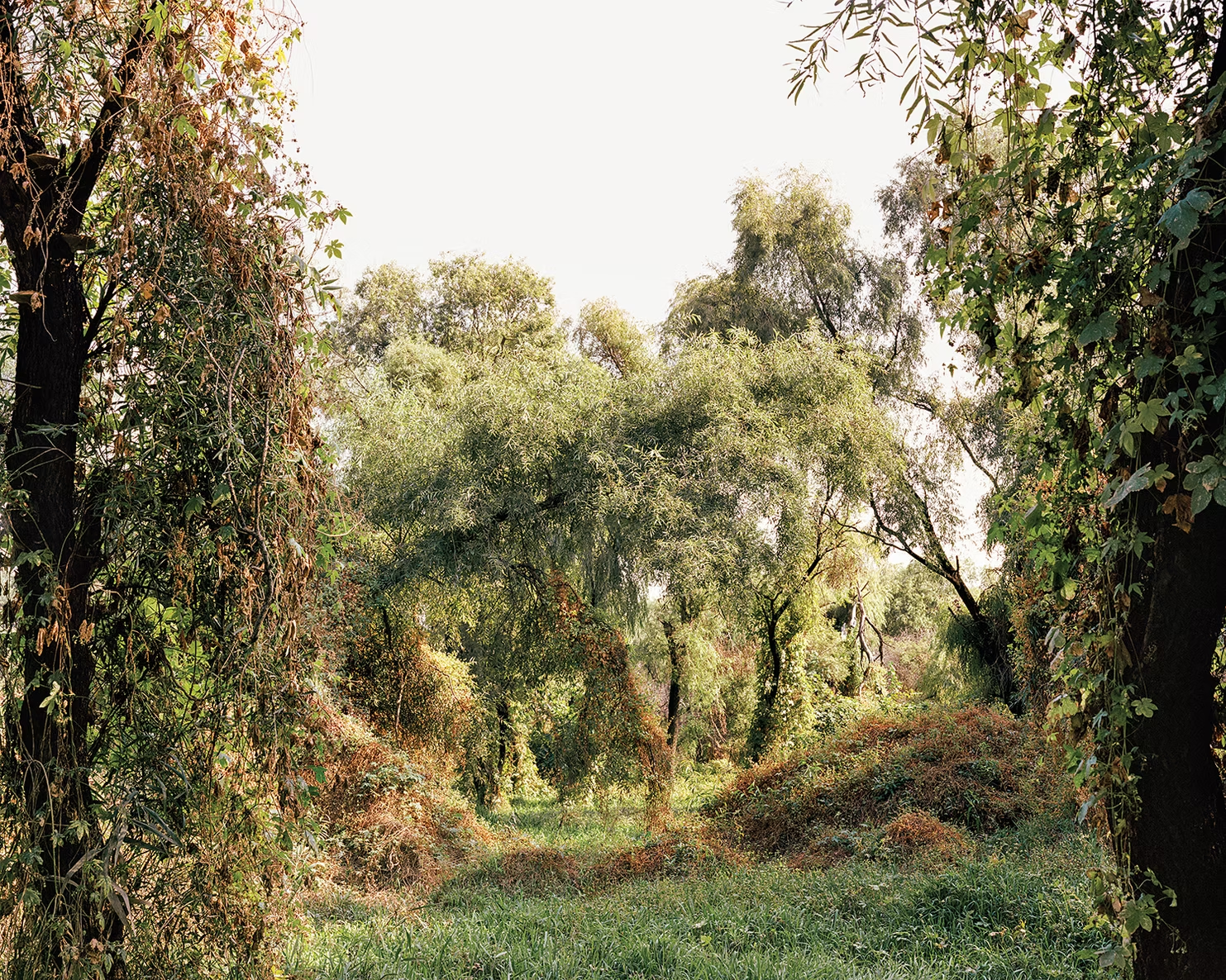
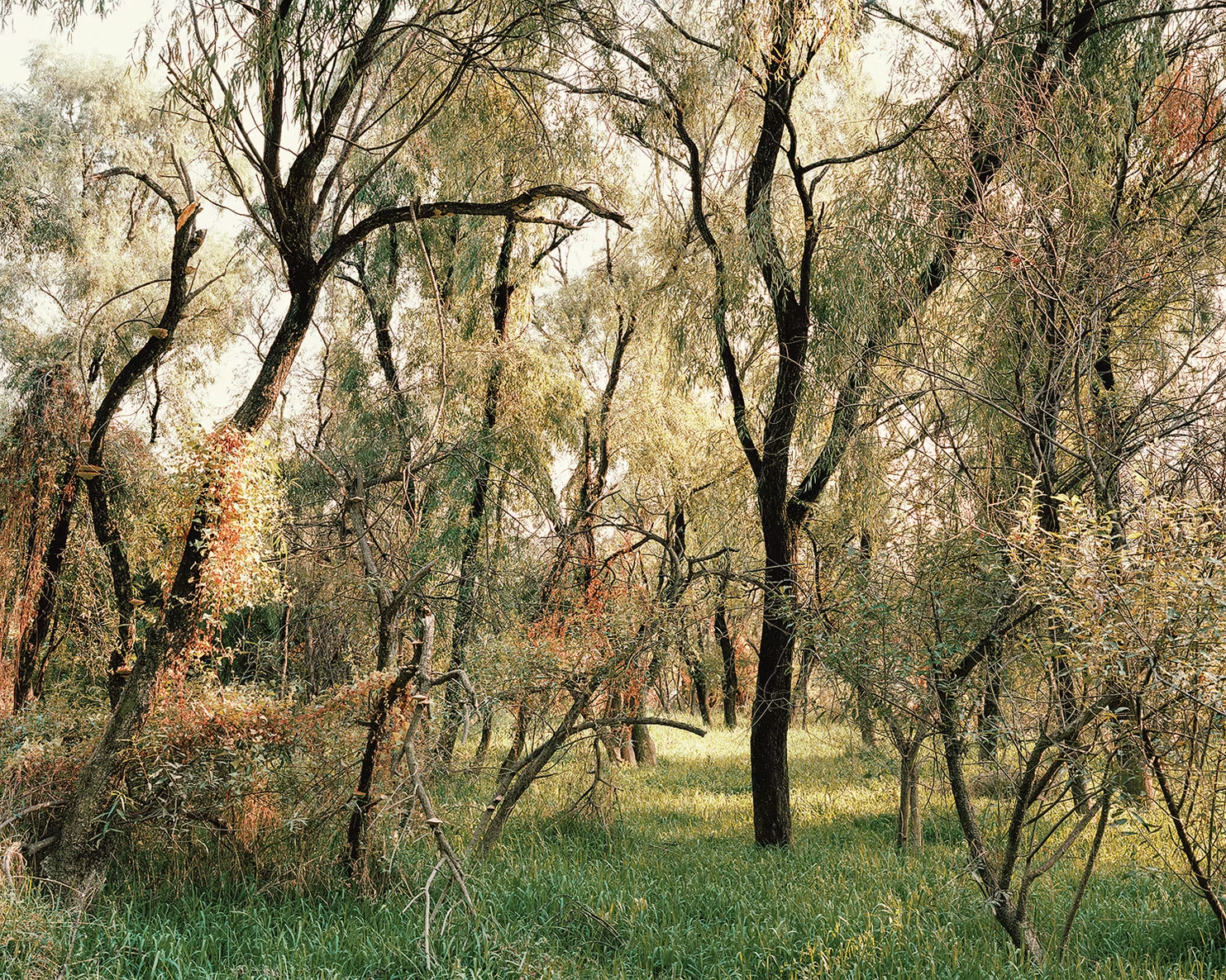
Bamseom sits in the river inside Seoul, but access is restricted. In 1968, during development, parts of the islands were excavated for materials. Since then, nature has restored itself. I saw it as a symbol of an ecological city. I wanted to stand on the islands and look back at Seoul through that nature. I wrote to the mayor for two years and finally got permission. I rowed out alone and photographed. We later exhibited the work in Seoul—the city was curious to see a place most people can’t enter.
And “Jingyeong Sansu”?
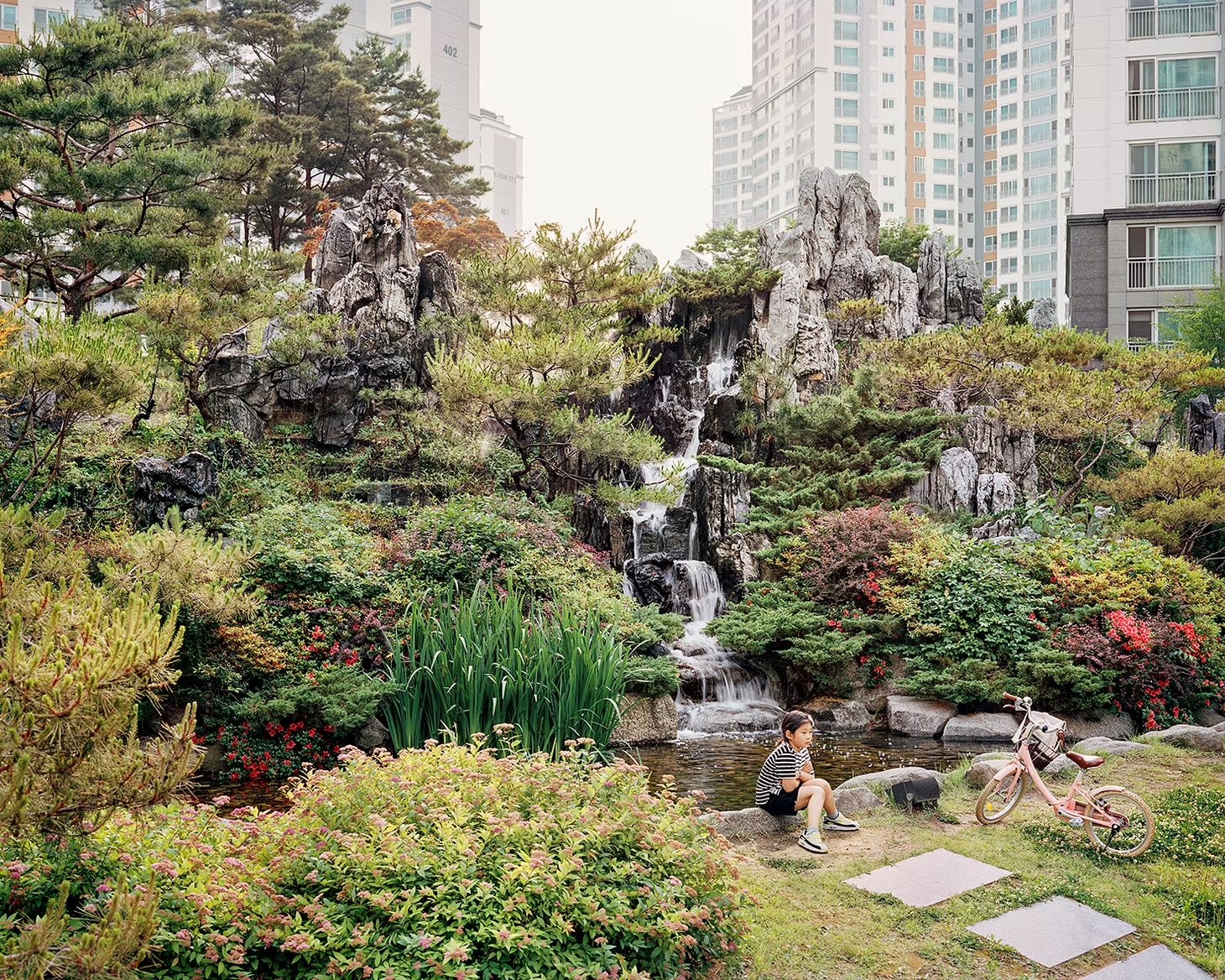
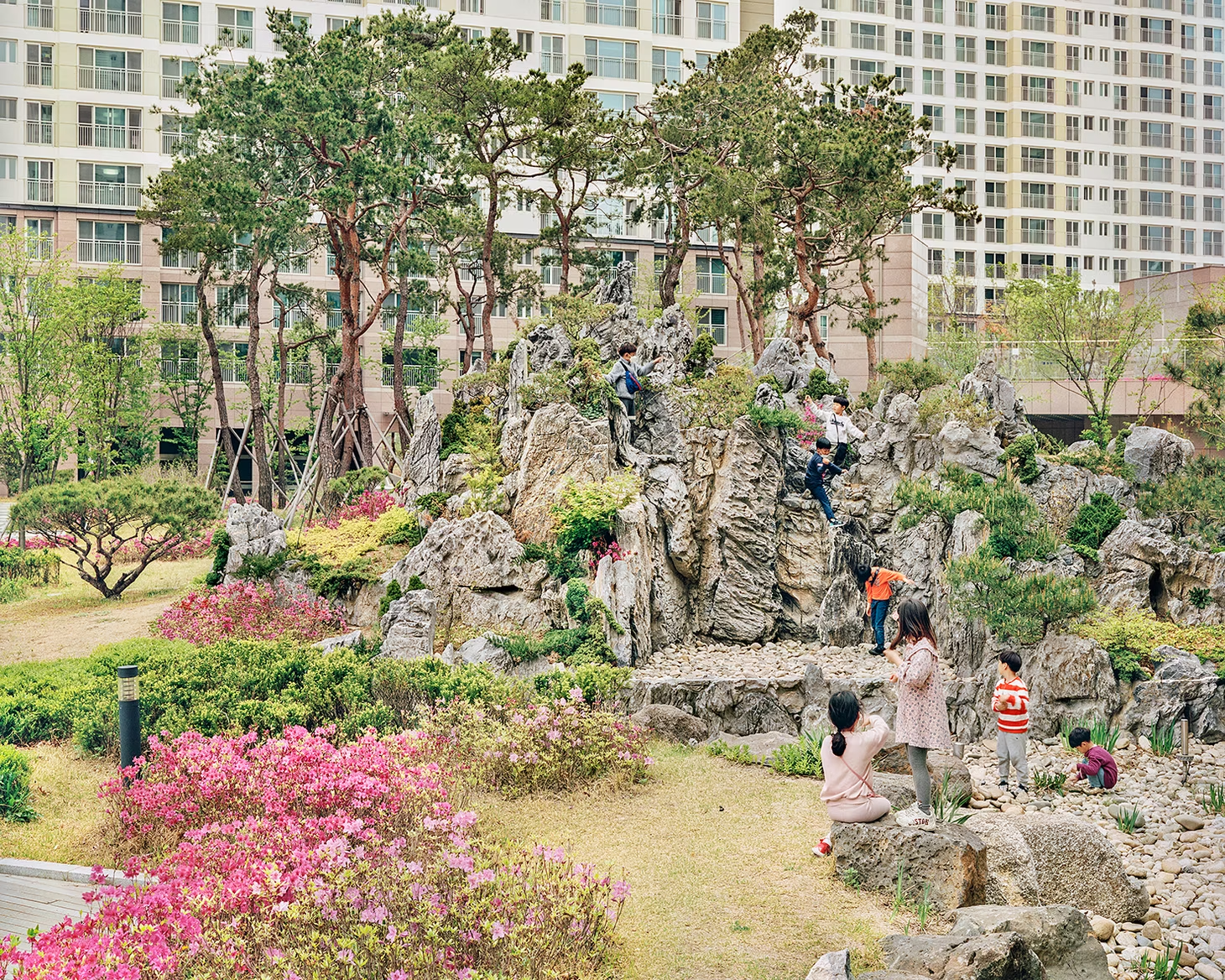
That series looks at how tradition and modernity mix in the city. Many luxury apartment complexes build replicas of Korea’s sacred mountains—Geumgang, Seorak, and others—because of feng shui beliefs about fortune. It’s funny and ironic, but also a kind of modern sublime. I don’t see it as mere kitsch; it reveals a real desire to bind spiritual value to economic and physical space. That tension interests me.
You’ve said you’re working on about ten ongoing projects. How do you decide where to put your attention week to week?
By weather, season, situation. If the wind is strong along the river, I’ll work on Riverside. If it’s cloudy, that’s good for Better Days. When flowers appear, I visit apartment complexes for Jingyeong Sansu. Analog is slow; I revisit the same places again and again. Long-term work is essential to me.
How many books so far?
Two. The first is from the Bamseom series, and the second is Better Days.
Seunggu, thank you. Thoughtful ideas, disciplined craft, and remarkable images. I’m excited to share your work in FRAMES Magazine soon.
Thank you. I’ll keep studying—and keep photographing.
SEUNGGU KIM

